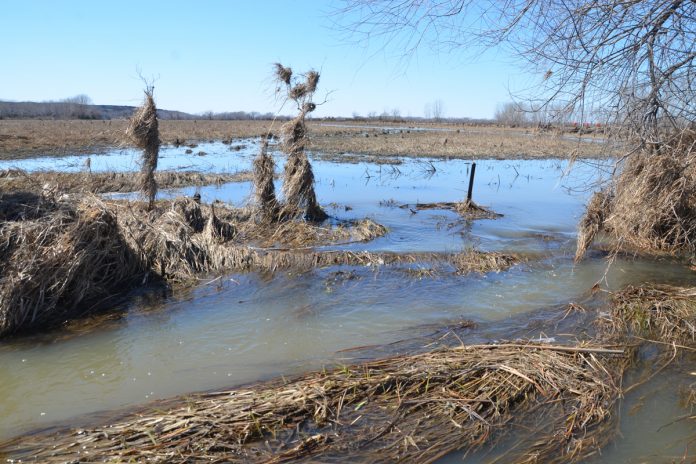
SALEM, Ohio — In mid-March, Dustin Sheldon, who farms near Sydney, Iowa, watched as 2,200 of his 2,500 acres of crop ground went under water.
Now, nearly a month later, “it’s receding, but we still have a good portion of land under water,” he said.
“It’s hard to believe unless you can see it with your eyes,” said Sheldon, who grows corn and soybeans with his family and runs cattle on pasture.
With what is typically planting season upon farmers, it’s unknown what the season will hold — if any crops can even be planted on some of that flooded ground.
“There is a lot of uncertainty,” Sheldon said.
He also lost most of his 2018 crop that was stored in bins that burst when the floodwaters made the stored grain swell.
“We are probably not going to get a whole lot of crop planted for this year, so we are looking at two years without a crop.”
“That’s pretty typical throughout our entire county,” said Sheldon.
On April 11, when he talked to Farm and Dairy, he was keeping an eye on the snowstorm headed toward the Upper Midwest.
“We might be right back to square one where we were three weeks ago,” said Sheldon.
The relief
Many groups have gathered donations and traveled out West to help with the natural disaster relief. When that help came, it touched Sheldon.
“It really tugs at your heartstrings, seeing someone come — that you have never met before and doesn’t know me from anybody on the street — willing to drive almost a thousand miles with supplies for people in our community. It’s pretty miraculous to me,” said Sheldon.
Locally, farmers and other volunteers galvanized through Ohio’s Rural American Relief and Ohio Relief Haulers, which both sent groups and supplies to Nebraska and Iowa.
Although they were some of the larger groups to go out West, there were smaller groups that also made the trip.
Lots of details
Brittany Hamlin and her husband Travis, of Rootstown, Ohio, organized Ohio Relief Haulers with individuals out of Ohio and Pennsylvania.
The planning “was one of the biggest challenges I have definitely taken on,” Brittany said. “It was a lot of sleepless nights for about 2 to 3 weeks.”
Ohio Relief Haulers coordinated a convoy of 52 trucks that traveled to Iowa and Nebraska. The group left April 5 and returned April 7.
According to Hamlin, they transported 503 round bales, 1,330 small square bales, 71 large square bales, roughly 25 hundred t-posts, over 20 tons of feed, over $10,000 worth of horse supplies, over $2,000 worth of safety equipment such as boots and gloves, over 20 rolls of barbed wire and eight enclosed trailers full of misc. supplies such as vet supplies, people supplies and cleaning products.
“We tried doing our very best to divvy it up, all the way from Naper, Nebraska, down to Sydney, Iowa,” she said, but “with this devastation, 52 trucks is nothing. It’s just a penny in a humongous bucket.”
Rose Hartschuh, Sycamore, Ohio, coordinates Ohio’s Rural America Relief, which made the trip to North Bend, Nebraska. Twenty-seven volunteers left March 29 and returned April 1.
The volunteers split into small groups each day, said Hartschuh, and worked with 10 different farmers. In total, the group volunteered about 450 hours.
Past relief
Both organizations coordinated relief efforts that traveled to Kansas and Oklahoma after the wildfires in 2017.
Hartschuh said after the 2017 experience, they wanted to focus on the manpower aspect.
“There’s a lot of great organizations, like the Relief Haulers for example, that are organizing hay and supplies and they are doing a wonderful job with that. We kind of want to take a different approach to it and instead organize volunteers,” said Hartschuh.
The convoy
Volunteers dropped what was going on in their life for a weekend to give back, or simply be farmers helping farmers.
Tristan Francis, Randolph, Ohio, drove the oldest truck in the Ohio Relief Haulers convoy, a ’99 Chevy K2500, but he had faith in his truck and the ability to make the trip there and back. He towed a bumper pull trailer with seven round bales close to 1,000 pounds each.
On the way back, they stopped at a truck stop and his brakes went out, but after two hours, it was fixed, and he was back on the road.
While driving, he looked at the farmland that had been covered by floodwaters.
“They are not fields anymore, they are beaches,” said Francis, who added he was motivated to make the trip just to be part of the farm group helping other farmers.
Humbling
When J.R. Byers, Rouseville, Pennsylvania, and his convoy were almost to their drop-off location of Sydney, Iowa, they stopped in Anita, Iowa, to get gas.
“I don’t know how many people lived in that town, but it seemed like the whole town flocked to that fuel station,” Byers said. “It was a very humbling experience to have people that I have never met, and may never see again, walk up and say ‘thank you, we are praying for you, we appreciate what you are doing.’”
He said several times on the trip between Pennsylvania and Iowa, strangers “would reach into their pocket, pull out whatever cash they happened to have and put it in one of the drivers’ hands.
“It’s been an incredible outpouring,” said Byers.
Helping family
Bryan Thiry, of Indianapolis, is originally from Naper, Nebraska, where some groups from the convoy took relief supplies.
He found Ohio Relief Haulers through Facebook, and joined the convoy with his truck and trailer carrying 20 round hay bales.
“It was very surreal, it was almost like walking into a nightmare,” said Thiry. “A lot of the main landmarks along the river that I was used to having there growing up aren’t there.”
Thiry said a neighbor’s farm along the river was under 8 feet of water. His parents still live on their Nebraska farm, and had half a mile of fence was taken out by the river.
“We got lucky,” said Thiry.
The sand
Mark Boley, an Akron firefighter who also raises a small group of hogs near Beloit, Ohio, traveled to Bartlett, Nebraska. He was joined in the truck by his wife, Brooke, and 3-year-old son.
“I know it would be pretty devastating if we lost everything we have, so we felt we had the means and the capability to do it, so we just thought it would be something we should go and do.”
When they pulled into the drop-off location, a woman “came up and just hugged us,” said Boley. “She was crying and just thankful that we brought supplies.”
They were unloading at the same time as a group from Oregon.
Boley was stunned by the amount of sand in the fields, and where they drove, there were a lot of washed-out roads, “but I know we didn’t even see the worst of it.”
Cleaning up
Brandie Finney, of Tiro, Ohio, traveled to North Bend, Nebraska, to help with clean-up efforts with Ohio’s Rural America Relief. She said the floodwater was so strong, it snapped the barbed wire in half, and lines of barbed wire were pulled out into the pasture.
“We had to clean all the debris off of them and then wind them up.”
They were working in a 240-acre pasture with six of volunteers, and they got 50-75 acres done by lunch. The townspeople’s response “was amazing,” she said.
“We brought our food, but they just made us food to say thank you, and that was what was amazing. Even though they are the ones going through this devastation, they were so willing to go out of their way,” said Finney.
Loss of cattle
Nadine Miller and her husband Tom, Bucyrus, Ohio, joined the relief effort after seeing a post on Facebook.
“We have the time and resources, so we just felt called to go,” said Nadine Miller.
They were a part of a group that delivered personal supplies to Columbus, Nebraska, where a group of churches had put together a distribution center.
They then traveled to North Bend, Nebraska, to help with clean up of fence, in a cemetery, then visited a farm in Scribner, Nebraska, that had flooded, splitting grain bins and killing cattle.
Miller said there was a pile of dead cattle along the driveway, at least 20 heifers and calves.
“We were very curious, but it really wasn’t our place to ask questions other than ‘how can I help you’ or ‘what can I do for you.’ But they did explain they piled them there because that was the only place that was firm enough for the skid loader to drive,” said Miller.
“They are still kind of stunned,” she added. “I think their lives had just been so busy trying to get their remaining cattle back to their farm from other pastures. And the cattle that did survive were all sick.”
Seeing devastation
Brittany and Travis Hamlin went to Osmond, Nebraska, to drop off supplies, then traveled to Valley City, Nebraska. To get to the farm in Valley City, they had to move a “road closed” sign and drive through.
“Everything was so saturated underneath that the semi sunk to their frames and enclosed trailers people were towing were being dragged across everything because it was just so soft. Everybody was sinking,” said Hamlin.
Arriving at the farm, Hamlin saw “a giant mud mess, cattle were up to their chest in mud and soup.”
The farm lost all their pigs in one barn that were either drowned by the floodwater or buried by all the silt and sand. When the Ohio group visited, they had a quarter of the barn with animals dug out, because all the ground around it was frozen, then thawed so they can’t get equipment back there anymore.
“When we pulled in, he was very kind and said they don’t take help, it’s not in their nature,” said Hamlin. “They were only willing to take it because we drove our trucks and trailers all the way down to them.”
“Farmers don’t like to ask for help, they are pretty independent, and they know they can get things done on their own,” said Hartschuh. “But that doesn’t mean that they don’t need help. So, if you can show up with the tools that you need to roll up your sleeves and work beside them, a lot of times that will jump-start their recovery process.”
Ohio Relief Haulers are making a second trip to Nebraska April 26. See how you can help send more relief to flood victims.
DSC_0811
That is in a pasture on the Hines farm in Morris Bluff, Nebraska about 50 miles northwest of Omaha. In the lower parts of this pasture it was nearly 10 feet deep at the peak of the flooding around March 15. The group from Ohio’s Rural American Relief spent most of a day clearing the debris from the fence on this cattle and grain farm so they could get in and repair it. (Submitted by Ohio’s Rural American Relief.)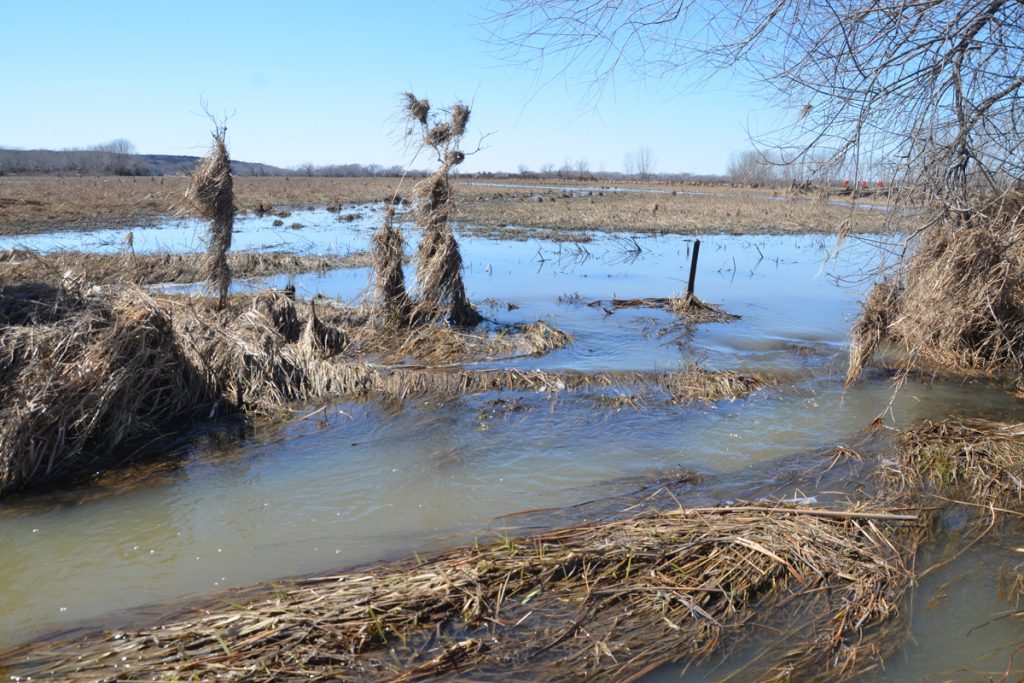
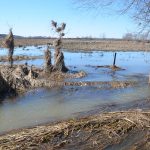 View
View
DSC_0811
That is in a pasture on the Hines farm in Morris Bluff, Nebraska about 50 miles northwest of Omaha. In the lower parts of this pasture it was nearly 10 feet deep at the peak of the flooding around March 15. The group from Ohio’s Rural American Relief spent most of a day clearing the debris from the fence on this cattle and grain farm so they could get in and repair it. (Submitted by Ohio’s Rural American Relief.) View
View
DSC_0766
Ohio’s Rural American Relief before leaving for Nebraska. (Submitted by Ohio’s Rural American Relief.)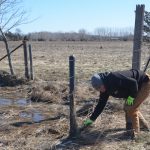 View
View
DSC_0778
Working to remove debris from fence after the flooding. (Submitted by Ohio’s Rural American Relief.) View
View
DSC_0816
An example of how much debris was on areas of fence in Nebraska. (Submitted by Ohio’s Rural American Relief.)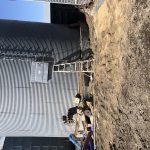 View
View
IMG_0634
A grain bin with corn on the ground in Nebraska. (Submitted by Ohio’s Rural American Relief.)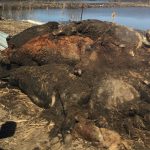 View
View
IMG_2018 copy
A pile of dead cattle after the flooding. (Submitted by Ohio’s Rural American Relief.)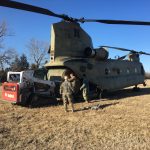 View
View
IMG_4976
Hay being brought in by helicopter to feed cattle. (Submitted by Ohio’s Rural American Relief.)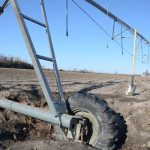 View
View
DSC_0828
An irrigation system stuck in mud due flood. (Submitted by Ohio’s Rural American Relief.) View
View
IMG_4981
A farm in Nebraska covered in water from the flooding. (Submitted by Ohio’s Rural American Relief.) View
View









